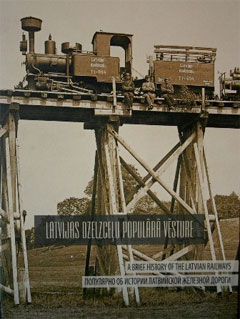Persons who went into exile during World War II, as well as their descendants, would be allowed dual citizenship under newly proposed amendments to Latvia’s citizenship law. Meanwhile, a Latvian-Canadian has turned to the Saeima asking it to restore her citizenship.
Six members of the Vienotība coalition—Uldis-Ivars Grava, Guntis Bērziņš, Anna Seile, Dzintars Ābiķis, Jānis Reirs and Gunārs Laicāns—proposed the amendments to the citizenship law in a bill submitted Oct. 14 in the Saeima.
Under Latvia’s current citizenship law, dual citizenship is not permitted. However, until July 1995 the law allowed exiles and their descendants to reclaim their Latvian citizenship while at the same time keeping the citizenship of their adopted homeland. A total of 30,793 persons obtained dual citizenship under the so-called transitional rule, according to the Office of Citizenship and Migration Affairs (Pilsonības un migrācijas lietu pārvalde).
The issue of dual citizenship has gained attention in the past few years because of new immigration from Latvia to countries such as Ireland and the United Kingdom, as well as because of complaints from the exile community that some people either did not know of the 1995 deadline or could not complete the registration process in time.
Under the amendments proposed Oct. 14, the restriction on dual citizenship would be lifted for children born abroad to parents who are Latvian citizens and who automatically become citizens of the other country; for persons who become citizens of another country through marriage; and for exiles and their descendants. Exiles are those people who were Latvian citizens as of June 17, 1940, and left their homeland from that date up to May 4, 1990, when the Latvian Supreme Council declared the nation’s independence from the Soviet Union.
This is not the first time Latvian politicians have sought to amend the citizenship law. For example, similar amendments pushed last year by the government coalition led by Prime Minister Valdis Dombrovkis failed to gain political support.
Vienotība, in a pre-election party meeting in July, announced that changes to the citizenship law should be on the agenda for the newly elected Saiema.
While the bill proposing the amendments would affect thousands of ethnic Latvians abroad, another bill submitted Oct. 14 seeks to restore Latvian citizenship for just one individual. Pēteris Tabūns, head of the Saeima’s commission on the citizenship law, submitted proposed legislation to recognize Latvian-Canadian Agra Vāgnere as a Latvian citizen.
According to the bill, Vāgnere, who was born in Latvia, moved to Canada in 1989 where she married an ethnic Latvian-Canadian and became a Canadian citizen. She admits failing to register as a Latvian citizen before the 1995 deadline, so now Vāgnere has turned to the Saeima commission for assistance.
Vāgnere’s contributions to the Latvian community in Canada and her work in defending Latvia’s interests abroad have earned her the right to be a Latvian citizen without giving up her Canadian citizenship, according to the bill. Among her community activities has been working with Latvian ethnic schools in Toronto, in 3×3 culture camps and the Daugavas Vanagi women’s auxiliary. She also has served with the Latvian National Federation in Canada (Latviešu Nacionālā apvienība Kanādā) and on the board of the World Federation of Free Latvians (Pasaules brīvo latviešu apvienība).
Vāgnere’s appeal to the citizenship commission is supported by Interior Minister Linda Mūrniece and PBLA Chairman Mārtiņš Sausiņš.




